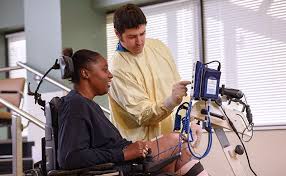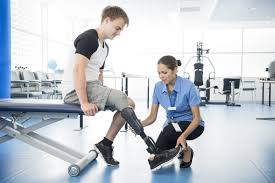Rehabilitation and Disaster Preparedness: Building Resilience for All
Disasters, whether natural or human-made, can have devastating consequences on individuals and communities. While disaster preparedness often focuses on immediate response and recovery efforts, rehabilitation plays a critical role in the long-term recovery and rebuilding process. This article explores the vital connection between rehabilitation and disaster preparedness, emphasizing the need to integrate rehabilitation strategies into disaster planning to enhance overall community resilience.
The Role of Rehabilitation in Disaster Response and Recovery
- Physical Rehabilitation: In the aftermath of a disaster, many individuals may sustain injuries, physical impairments, or disabilities. Rehabilitation services, including physical therapy, can help restore their mobility, strength, and functionality, allowing them to regain independence and participate in recovery efforts.

- Psychological Rehabilitation: Disasters can result in significant psychological trauma, including post-traumatic stress disorder (PTSD) and other mental health challenges. Psychosocial support and counseling are essential components of rehabilitation to address the emotional well-being of survivors.
- Social Rehabilitation: Disasters often disrupt social networks and support systems. Rehabilitation services can help individuals rebuild their social connections, reintegrate into their communities, and regain a sense of belonging.
- Vocational Rehabilitation: Rebuilding livelihoods is a crucial aspect of recovery. Vocational rehabilitation programs can help individuals with disabilities or injuries acquire new skills, access job opportunities, and regain economic independence.
Integrating Rehabilitation into Disaster Preparedness
- Assessment and Planning: Communities should assess their rehabilitation capacity and needs as part of disaster preparedness planning. This includes identifying healthcare facilities, rehabilitation providers, and equipment that can be mobilized in the event of a disaster.
- Training and Education: First responders, emergency healthcare providers, and community leaders should receive training on recognizing the importance of rehabilitation in disaster response. They should understand how to facilitate access to rehabilitation services for those in need.
- Inclusive Shelter and Infrastructure: Disaster shelters and infrastructure should be designed to accommodate individuals with disabilities, ensuring accessibility and the availability of necessary rehabilitation equipment and facilities.
- Coordination and Collaboration: Effective disaster response and recovery require collaboration between healthcare providers, emergency services, and rehabilitation professionals. Establishing coordination mechanisms and partnerships in advance is vital.
- Accessible Information: Disseminating information about available rehabilitation services and resources should be accessible to all, including individuals with sensory or cognitive impairments.
Benefits of Integrating Rehabilitation into Disaster Preparedness
- Enhanced Community Resilience: Integrating rehabilitation into disaster preparedness plans strengthens a community’s ability to bounce back from disasters, ensuring that individuals can recover and participate in rebuilding efforts.
- Improved Health Outcomes: Timely access to rehabilitation services can prevent secondary health issues and complications among disaster survivors, improving their overall health outcomes.
- Greater Social Inclusion: Inclusive disaster preparedness and response measures promote social inclusion and reduce disparities among individuals with disabilities or injuries.
- Cost Savings: Early rehabilitation intervention can reduce the long-term costs associated with healthcare and support services for disaster survivors.
Rehabilitation is an often-overlooked but critical component of disaster preparedness and response. By integrating rehabilitation strategies into disaster planning, communities can enhance their resilience, ensure the well-being of individuals with disabilities or injuries, and promote a more inclusive and equitable recovery process. Recognizing the role of rehabilitation in disaster preparedness is essential for building stronger, more resilient societies that can withstand and recover from the challenges of a changing world.

Leave a Reply